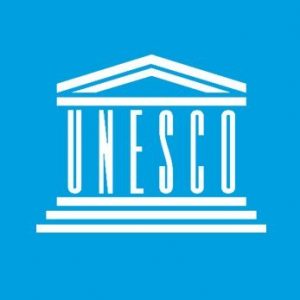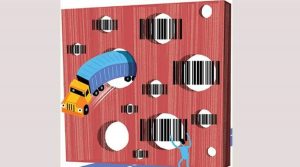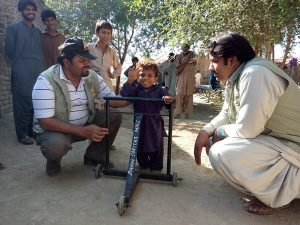Today Current Affairs: 20th May 2021 for UPSC IAS exams, State PSC exams, SSC CGL, State SSC, RRB, Railways, Banking Exam & IBPS, etc
Table of Contents
UNESCO: Six Sites Have Been Added To India’s Tentative List:

Six sites have been added to India’s tentative list of UNESCO world heritage sites.
Six of the nine sites submitted by the Archaeological Survey of India had been accepted by UNESCO for inclusion in the tentative list, which is a requirement before the final nomination of any site.
- The recently-included proposals are the
- Maratha military architecture in Maharashtra,
- Hire Bengal megalithic site in Karnataka,
- Bhedaghat-Lametaghat of Narmada Valley in Madhya Pradesh.
- Ganga ghats in Varanasi,
- temples of Kancheepuram and
- Satpura Tiger Reserve in Madhya Pradesh.
- These proposals will remain on the tentative list for a year after which the government will decide which one of them to push for in their final dossier to UNESCO, officials said.
- With the addition of these six sites, UNESCO has 48 proposals in the tentative list of India.
- As per Operational Guidelines, 2019, it is mandatory to put any monument/site on the Tentative List (TL) before it is considered for the final nomination dossier.
- India has 48 sites in the TL as of now.
- As per rules, any country can submit the nomination dossier after one year of it being on the TL.
NASA-ESA Solar Orbiter Spacecraft:

NASA and European Space Agency’s spacecraft has captured the first solar eruption on the Sun’s surface. These eruptions are also known as coronal mass ejections (CME).
- If these eruptions on the Sun’s surface are big enough, they can cause billions of tons of plasma and electrically charged particles to dash towards Earth.
About NASA-ESA Solar Orbiter Spacecraft:
- Solar Orbiter is a space mission of international collaboration between ESA (European Space Agency) and NASA.
- The spacecraft was launched from Cape Canaveral on a United Launch Alliance Atlas V rocket in February 2020.
- It was selected as the first medium-class mission of ESA’s Cosmic Vision 2015-2025 Programme.
- This is the first mission that will provide images of the sun’s north and south poles using a suite of six instruments on board that will capture the spacecraft’s view.
- It is a seven-year mission and will come within 26 million miles of the sun.
- It will be able to brave the heat of the sun because it has a custom titanium heat shield coated in calcium phosphate so that it can endure temperatures up to 970 degrees Fahrenheit.
- Solar Orbiter follows the Ulysses spacecraft, another collaboration between ESA and NASA that launched in 1990.
E-Way Bill Integration with FASTag, RFID:

The Union Government has integrated the E-Way Bill (EWB) system with FasTag and RFID.
Electronic Way (E-Way) Bill:
- E-Way Bill is usually a unique bill number generated for the specific consignment involving the movement of goods.
- Under the Goods and Services Tax (GST) regime, EWBs are mandatory for inter-state transportation of goods valued over Rs. 50,000 from April 2018, with the exemption to precious items such as gold.
- It is a mechanism to ensure that goods being transported comply with the GST Law and is a tool to track the movement of goods and check tax evasion.
FASTag:
- The FASTag is a reloadable tag that allows automatic deduction of toll without having to stop for carrying out the cash transaction.
- The tag uses Radio Frequency Identification (RFID) technology and is fixed on the windscreen of the vehicle once active.
- RFID is the use of radio waves to read and capture information stored on a tag attached to an object.
- A tag can be read from up to several feet away and does not need to be within the direct line of sight of the reader to be tracked.
- From 15th February 2021, FASTag has become compulsory for all vehicles across the country.
- It is operated by the National Highway Authority of India (NHAI).
Significance of Integration:
- Large Movement of Goods Vehicles: On average, 25 lakh goods vehicle movements from more than 800 tolls are reported on a daily basis to the E-Way Bill system.
- Live Vigilance: The integration of EWB, RFID, and FASTag will enable tax officers to undertake live vigilance in respect of EWB compliances by businesses.
- Taxmen can now access reports on vehicles that have passed the selected tolls without e-way bills in the past few minutes.
- Stop Revenue Leakage: It will aid in preventing revenue leakage by real-time identification of cases of recycling and/or non-generation of EWBs.
Community-Based Inclusive Development (CBID) Program:

Launched recently by the Union Ministry of Social Justice.
- The program aims to create a pool of grass-root rehabilitation workers at the community level who can work alongside ASHA and Anganwadi workers to handle cross-disability issues and facilitate inclusion of persons with disabilities in the society.
- The program has been designed to provide competency-based knowledge and skills among these workers to enhance their ability to successfully discharging their duties.
- These workers will be called ‘Divyang Mitra’ i.e. friends of persons with disabilities.
- The National Board of Examination in Rehabilitation under the Rehabilitation Council of India will conduct examinations and award certificates to pass-out candidates.
Hike On Fertiliser Subsidy:

The government takes a historic pro-farmer decision of hiking fertilizer subsidy.
- PM Narendra Modi chaired a high-level meeting on the issue of fertilizer prices.
- It was discussed that the price of fertilisers is undergoing an increase due to the rising prices of phosphoric acid, ammonia, etc internationally.
- A historic decision was taken to increase the subsidy for DAP fertiliser from Rs. 500 per bag to Rs. 1200 per bag, which is an increase of 140%.
- Thus, despite the rise in international market prices of DAP, it has been decided to continue selling it at the older price of Rs.1200 and the central government has decided to bear all the burden of price hikes.
- The amount of subsidy per bag has never been increased so much at once.
- Recently, the international prices of phosphoric acid, ammonia, etc. used in DAP have gone up by 60% to 70%.
- So the actual price of a DAP bag is now Rs 2400, which could be sold by Fertilizer companies at Rs 1900 after considering a subsidy of Rs 500.
- With recent decisions, farmers will continue to get a DAP bag for Rs 1200.
Pradhan Mantri Swasthya Suraksha Yojana:

New AIIMS started under Pradhan Mantri Swasthya Suraksha Yojana are providing advanced COVID Care in States.
- Pradhan Mantri Swasthya Suraksha Yojana (PMSSY), a Central Sector Scheme, was announced in 2003 to address imbalances in the availability of tertiary care hospitals and improve medical education in the country.
- The scheme received a fresh impetus to fulfill Prime Minister Narendra Modi’s vision of quality medical education in the underserved States, and many new All India Institutes of Medical Sciences are being set up under the Pradhan Mantri Swasthya Suraksha Yojana.
- So far setting up of 22 new AIIMS has been approved under the scheme, out of which six AIIMS at Bhopal, Bhubaneswar, Jodhpur, Patna, Raipur, and Rishikesh are already fully functional.
- In another seven AIIMS, OPD facility and MBBS classes have started while in five more institutes only MBBS classes have started.
- These regional AIIMS, set up or being set up under PMSSY, have played a very significant role in the management of COVID since the beginning of the pandemic early last year.
‘Infrastructure Status For Exhibition And Convention Centres:

The Finance Ministry has granted ‘Infrastructure’ status for exhibition and convention centers, a move that is expected to ease bank financing for such projects.
- ‘Exhibition-cum-Convention Centre is included in the Harmonised Master List of Infrastructure sub-sectors by insertion of a new item in the category of Social and Commercial Infrastructure,’ the Department of Economic Affairs said.
- However, the benefits would only be available for projects with a minimum built-up floor area of 1,00,000 sq. m. of exclusive exhibition space or convention space or both combined.
- As of now, the major projects underway in the sector are backed by the government – the International Exhibition-cum-Convention Centres at Dwarka and Pragati Maidan in the capital.
- The infrastructure tag does not involve significant tax breaks but would help such projects get easier financing from banks, said experts.
- However, restrictions on size may be a dampener.
- India doesn’t have large convention centres or single halls with capacities to hold 7,000 to 10,000 people, unlike countries like Thailand that is a major global MICE-destination.
- Becoming a MICE (Meetings, Incentives, Conferences and Exhibitions) destination can generate significant revenue with several global firms active in India but it will take time to become a preferred destination.
- Last August, the government had granted infrastructure status to affordable rental housing projects.
Cryptocurrency: Crashing As Much As 30% Within 24 Hours:

The cryptocurrency market saw a big correction with prices of major currencies, including Bitcoin, Ethereum, BNB, and others crashing as much as 30% within 24 hours.
China announced:
- This came in the backdrop of Chinese regulators announcing a crackdown on cryptocurrencies.
- China has barred financial institutions and payment companies from providing any services related to cryptocurrency transactions.
- This means that banks and online payment channels must not offer clients any service involving cryptocurrencies, such as registration, trading, clearing, and settlement.
- China had issued such a ban in 2017 as well, but compared with the previous ban, the new rules have expanded the scope of prohibited services, and surmise that “virtual currencies are not supported by any real value”.
- While the Chinese announcement was the straw that broke the camel’s back, Bitcoin and Ethereum were on a decline since last week when Tesla CEO Elon Musk announced that the electric carmaker won’t be accepting Bitcoin as payment — a reversal of an earlier decision.
Single-Use Plastic:

A report was published which gave details of who makes single-use plastic, 130 million tons a year at last count, and who makes money from it.
- The report was published by Minderoo, a nonprofit organization based in Australia along with academics at the University of Oxford and the Stockholm Environment Institute.
Major Producers:
- Half of the world’s single-use plastic is made by 20 big companies.
- Two US companies followed by a Chinese-owned petrochemicals giant, and another one based in Bangkok.
Major Investors:
- Production is financed by financial services companies including banks.
- Governments are also big stakeholders in this industry. About 40% of the largest single-use plastic makers are partly owned by governments, including China and Saudi Arabia.
Growth:
- Single-use plastic has been a very good business, and that’s projected to continue. In the next five years alone, production capacity is forecast to grow by 30%.
Usage:
- There’s a huge disparity between richer and poorer nations:
- An average American uses and throws away 50 kilograms of single-use plastic every year whereas an average Indian uses less than one-twelfth of an American.
Single-Use Plastics:
- Single-use plastics, or disposable plastics, are used only once before they are thrown away or recycled.
- These items are things like plastic bags, straws, coffee stirrers, soda and water bottles and most food packaging.
- Plastic is so cheap and convenient that it has replaced all other materials from the packaging industry but it takes hundreds of years to disintegrate.
- It is a huge problem. If we look at the data, out of 9.46 million tonnes of plastic waste generated every year in our country, 43% is single-use plastic.
- Uses:
- The single-use plastic products also prevent the spread of infection.
- Instruments such as syringes, applicators, drug tests, bandages, and wraps are often made to be disposable.
- Also, single-use plastic products have been enlisted in the fight against food waste, keeping food and water fresher for longer and reducing the potential for contamination.
- Petroleum-based plastic is not biodegradable and usually goes into a landfill where it is buried or gets into the water and finds its way into the ocean.
- In the process of breaking down, it releases toxic chemicals (additives that were used to shape and harden the plastic) which make their way into our food and water supply.




